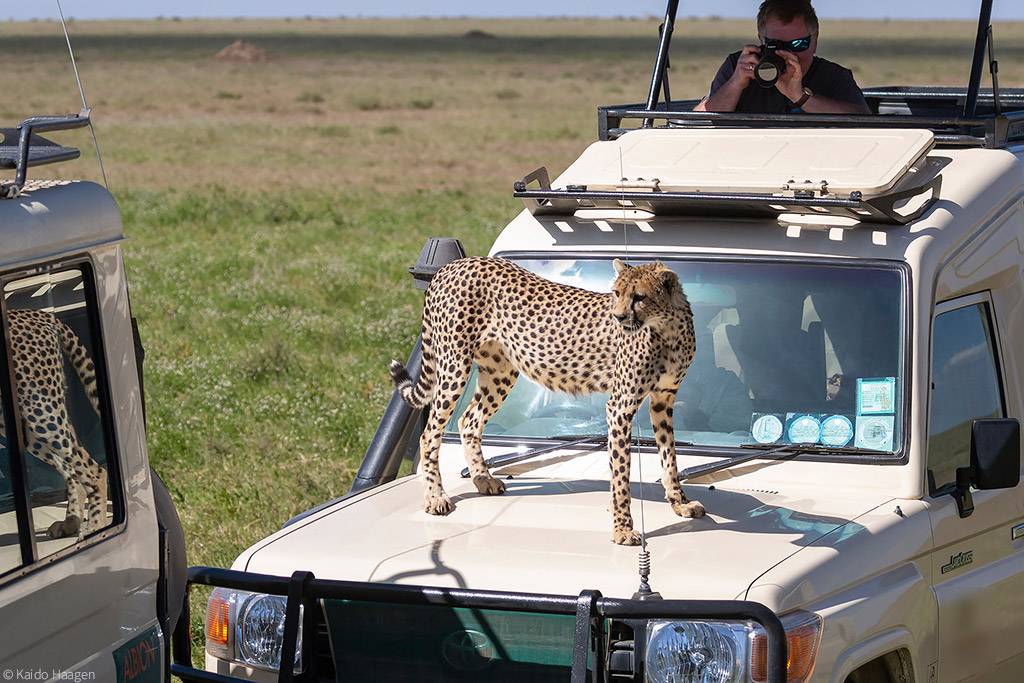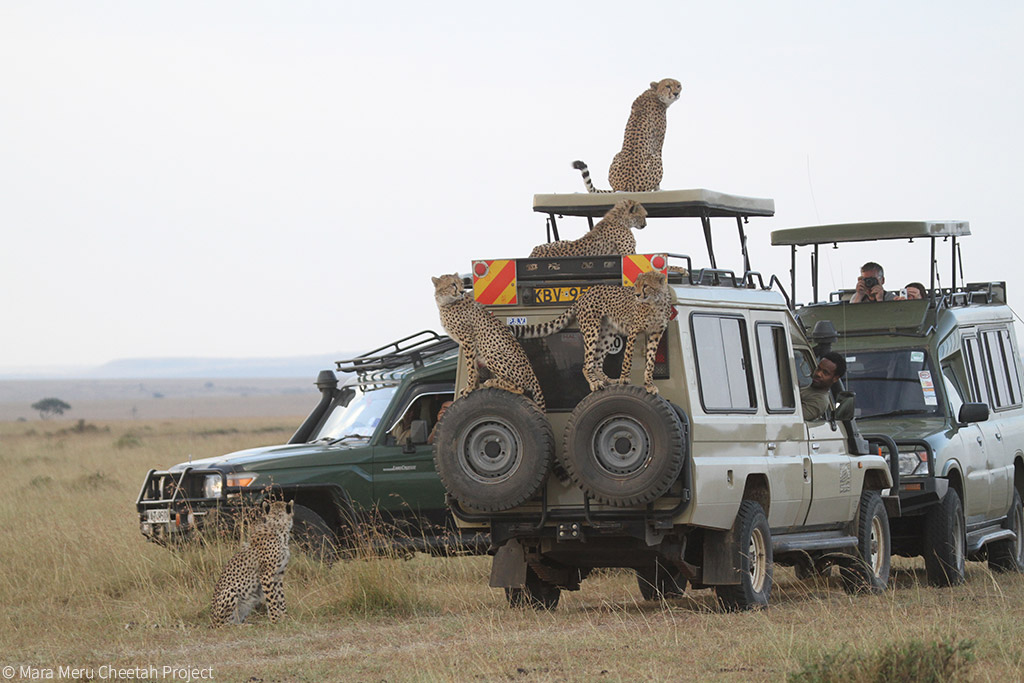
With ever-growing competition within the safari industry, the pressure to provide up-close and personal cheetah and other big cat sightings have increased. Within most of the popular safari destinations, the wildlife has become so habituated to the presence of vehicles that they largely ignore them, allowing visitors to admire the beauty of these animals at close proximity. But how close is too close?
In East Africa, there are countless videos and photographs on the internet depicting safari vehicles with cheetahs clambering over them, sometimes even into the vehicle itself, in-between the guests. A once-in-a-lifetime experience for those guests and something that is on the wish list for many a novice safari-goer – with the added bonus of the footage or photographs going viral. The practice is unethical for several reasons and puts the cheetah’s life at risk. Also, this is against established rules and condemned by cheetah conservation programs,
These car-climbing cheetahs are almost all found in the open habitats of East Africa, and they probably do it for the same reason they might climb a tree or a termite mound – it provides a useful vantage point and a high point to scent-mark. With younger individuals that learn this behaviour from their mothers, there is almost certainly an element of curiosity as well. It comes with significant risk, and there are incidents of cheetah injuring themselves climbing onto or jumping off vehicles and, as with any wild animal, injury can have dire consequences.

As the smallest of the big cats of Africa, the cheetah is generally a timid animal that is unlikely to pose a threat to humans, which has led to a certain amount of complacency around them. However, they are still big predators and can injure a human being if provoked (and have done so in the past). The cheetahs that climb vehicles have lost their natural caution around humans, and that inherently makes them potentially more dangerous. In a closed environment in such close proximity to people, any sudden movement or noise from a guest could provoke a defensive or aggressive response from the cheetah, which will inevitably result in injury. This is even likely when there are children in the vehicle (human children are prey-size, and they often squeal similarly to a distressed prey animal) or when the guests provoke the cheetahs for a better photo – not to mention the possible diseases and parasites tourists could be exposed to. In most cases, when a wild animal injures a human, the animal will pay the price in one way or another.

This increased comfort with humans could also spell disaster for cheetah for a different reason – one of the biggest threats facing cheetah populations is conflict with people, and these cheetahs are less likely to go out of their way to avoid encountering humans.
The exploitation of wildlife is a hot topic and “wildlife selfies” are pervasive, despite the token (and mostly meaningless) efforts of social media websites to curb the tide. Allowing cheetah to climb onto cars falls on the wrong side of this line, and with changing attitudes towards interaction with wild animals, tourists need to be aware of this. Cheetah make their intentions clear when they approach the vehicles, and all that is required to prevent them from jumping up is for the guide to move the vehicle slowly away, especially if that individual cheetah is known for that behaviour.

Dr Femke Broekhuis, who is currently a senior research associate with the Wildlife Conservation Research Unit at the University of Oxford and has extensive experience in cheetah conservation throughout Africa, suggests that tourists too have a responsibility in their enjoyment of wildlife. Firstly, by not pressuring or encouraging their guide to allow the cheetah too close, and secondly, by not propagating the popularity of this practice by sharing or supporting the photos and videos of these sightings. She writes, “Cheetahs already face a kaleidoscope of threats that are causing significant declines. Let’s not add additional stress to these animals. We can all play a role in cheetah conservation by respecting these felids in peril”.
To comment on this story: Login (or sign up) to our app here - it's a troll-free safe place 🙂.![]()






